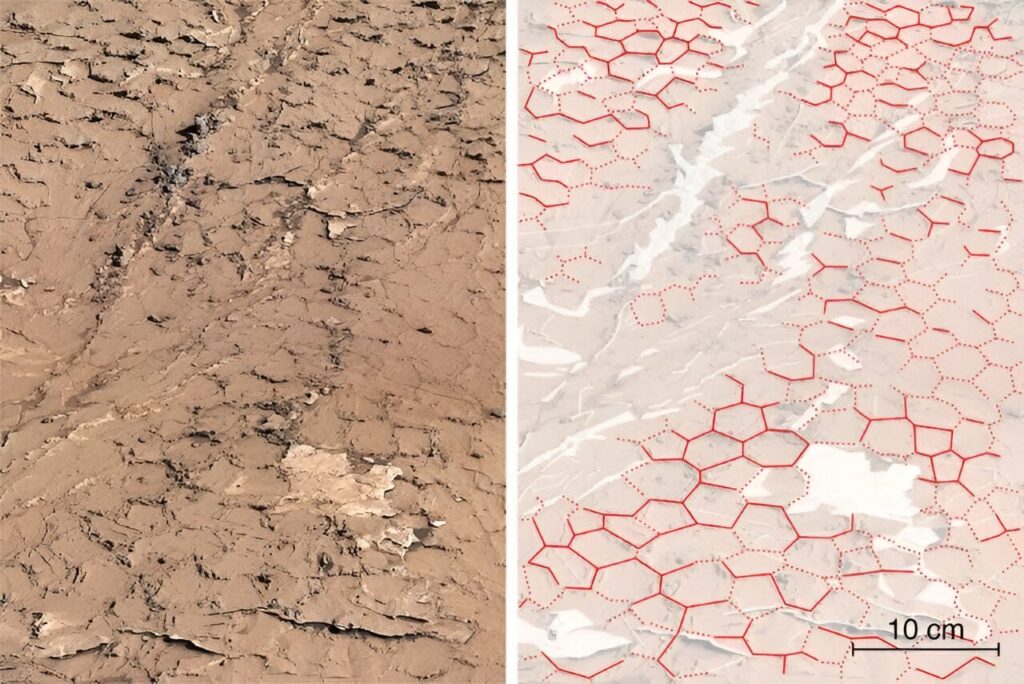The Mars rover Curiosity recently conducted drilling into rocks that were once sedimentary formations on Mars. The presence of a network of cracks within them suggests that they were ancient clays that dried out in the Sun. This confirms the idea that Mars once had a wet climate.

Curiosity Mars Rover. Source: www.britannica.com
Cracks in Ancient Mud
Scientists working with the Curiosity rover have recently announced a new piece of evidence that the Red Planet was once wet. In 2021, the rover was exploring Gale Crater when it encountered a rock named Pontours.
The rover drilled into it to take samples from its depths and captured the process on camera. Researchers have now noticed that these images show a grid of shallow but dense cracks. Similar formations can be found on Earth during summer in places where deep puddles on the ground dry out. The rapid transition from a water-saturated environment to a dry one literally fractures the rock, which is composed of very fine particles.
Scientists theorized that this rock could have been ancient Martian mud that dried out in the Sun and cracked. They already knew that the Pontours rock is actually the remnants of sedimentary rocks, so the next step was to determine its chemical and mineral composition.

Mars Was Indeed Wet
Analysis of the samples taken by Curiosity revealed two important findings. Firstly, the material is indeed smectite clays transitioning into sulfate-bearing layers. Secondly, their age ranges from 3.6 to 3.8 billion years, corresponding to the Noachian and Hesperian epochs.
Both smectite clays and sulfates on Earth are formed in wet conditions, leading scientists to conclude that they were present on Mars during the indicated time frame. This conclusion isn’t groundbreaking, as evidence of water’s existence on Mars in the past has been found before.
However, the extent of its prevalence during different periods while Mars transformed into the lifeless desert we know today remains somewhat unclear to scientists. Therefore, every piece of evidence found holds value.
Moreover, the ancient Martian puddles are intriguing because it was precisely in such environments on Earth that life originated and developed. Hence, it’s entirely possible that traces of it might be found within the Martian clays.
Based on materials from phys.org.

